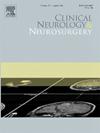中低收入国家神经肿瘤学肿瘤委员会的全国提供者调查:比较有和没有肿瘤委员会的中心。
IF 1.8
4区 医学
Q3 CLINICAL NEUROLOGY
引用次数: 0
摘要
目的:提供关于中低收入国家神经肿瘤学肿瘤委员会(notb)的实施、资源、实践模式和普遍看法的信息。方法:采用非概率抽样、预先验证的形式、使用SPSS v27进行数据分析、使用量子地理信息系统进行地理空间制图,设计了一项全国范围内的调查,涉及执业神经外科医生的实践、结构和感知数据。结果:对来自中低收入国家63个神经外科中心的139名神经外科医生进行了调查。15/63的神经外科中心有专门的notb。与没有NOTBs的神经外科医生(44 %,p = 0.012和44 %,p = 0.004)相比,来自NOTBs中心的神经外科医生有更好的机会获得放射肿瘤学家的姑息治疗(70 %)和服务(73 %)。76.3% %的神经外科医生常规开具术后CT扫描,在没有NOTBs的中心,这一比例更高(94 %对80 %,p = 0.024)。57.6% %的神经外科医生在术后六周内对轴内病理进行MRI扫描,NOTB中心的比例更高(63% %对56% %,无统计学意义)。NOTBs包括改善病人的积极影响感知结果(87.6 %),加快集中病人护理(88.3 %),减少转诊*(74.4 %),增加辅助管理(66.4 %)的吸收,降低死亡率和发病率(73.1 %),和重要的治疗(78.5 %)和诊断计划变化(77.4 %)而感知到的负面影响包括耗时的性质(20.7 %),和痛苦的病人由于等待与NOTBs(36 %)。被认为存在的障碍包括“缺乏行政支持”(17.1% %)、“资源有限”(15.2% %)和“缺乏标准化协议或指南”(13.8% %)。结论:在这个来自中低收入国家的全国情况报告中,只有四分之一的神经外科单位有专门的notb。有nobs的中心大多是教育/培训中心,有更好的机会获得姑息治疗决策和护理。来自NOTBs中心的神经外科医生在术后立即进行CT扫描的比例较低,而在6周内进行轴内病理MRI扫描的比例较高。因此,notb可以帮助提倡明智地使用神经影像学和增加辅助姑息治疗的吸收。虽然感知到的影响是相似的,但对于低收入和高收入人群来说,感知到的障碍的性质是不同的。我们的研究可以帮助决策者、医院和医疗保健专业人员,并为未来深入研究资源/服务的地理空间映射提供路线图,以充分阐明不平等现象。本文章由计算机程序翻译,如有差异,请以英文原文为准。
A nationwide provider survey of neuro-oncology tumor boards in a lower-middle-income country: Comparing centers with and without tumor boards
Objectives
To provide information about implementation, resources, practice patterns and prevalent perceptions regarding neuro-oncology tumor boards (NOTBs) in a lower middle income country.
Methods
A nationwide survey was designed to include licensed neurosurgeons involving data on practice, structure, and perceptions of NOTBs with non-probability sampling, a pre-validated proforma, data analysis using SPSS v27, and geospatial mapping using Quantum GIS.
Results
139 neurosurgeons were surveyed from 63 neurosurgical centers of a lower middle income country. 15/63 neurosurgical centers had dedicated NOTBs. Neurosurgeons from centers with NOTBs had better access to palliative care with radiation oncologists (70 %) and services (73 %) as compared to those without NOTBs (44 %, p = 0.012 and 44 %, p = 0.004). 76.3 % of neurosurgeons routinely prescribed postoperative CT scans with higher rate in centers without NOTBs (94 % vs. 80 %, p = 0.024). 57.6 % of neurosurgeons prescribed postoperative MRI scans within six weeks for intra-axial pathology, with higher rates in NOTB centers (63 % vs. 56 %, not significant). The perceived positive effects of NOTBs included improved patient outcomes (87.6 %), expedited centralized patient care (88.3 %), decreased referral times (74.4 %), increased uptake of adjuvant management (66.4 %), decreased mortality/morbidity (73.1 %), and significant treatment (78.5 %) and diagnostic plan changes (77.4 %) while perceived negative effects included the time-consuming nature (20.7 %), and suffering of patients due to wait associated with NOTBs (36 %). The perceived barriers included “lack of administrative support” (17.1 %), “limited resources” (15.2 %), and “lack of standardized protocols or guidelines” (13.8 %).
Conclusion
In this nationwide situational report from a lower middle income country, only a quarter of neurosurgical units had dedicated NOTBs. The centers with NOTBs were mostly education/training centers, and had better access/availability to palliative decision-making and care. The neurosurgeons from centers with NOTBs had lower rates of prescribing immediate postoperative CT scans while higher rates of prescribing MRI scans within 6 weeks for intra-axial pathology. Therefore, NOTBs can help advocate for judicious use of neuroimaging and increased uptake of adjuvant palliative treatment. While perceived effects were similar, the nature of perceived barriers was different for LMIC and HIC. Our study can aid policymakers, hospitals, and healthcare professionals, and can provide a roadmap for future in-depth studies with geospatial mapping of resources/services to fully elucidate the inequalities.
求助全文
通过发布文献求助,成功后即可免费获取论文全文。
去求助
来源期刊

Clinical Neurology and Neurosurgery
医学-临床神经学
CiteScore
3.70
自引率
5.30%
发文量
358
审稿时长
46 days
期刊介绍:
Clinical Neurology and Neurosurgery is devoted to publishing papers and reports on the clinical aspects of neurology and neurosurgery. It is an international forum for papers of high scientific standard that are of interest to Neurologists and Neurosurgeons world-wide.
 求助内容:
求助内容: 应助结果提醒方式:
应助结果提醒方式:


